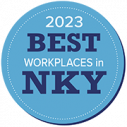In just over a year time span, Dayton and Cincinnati Ohio have been hit with devastation. From Tornado’s to Mass Shootings, September 6th was the one-year anniversary of the 5/3 mass shooting and only a month earlier the mass shooting in the Oregon District took place. This is not an easy topic to discuss and many of us are likely to ignore it thinking it will never happen at our organization, but it’s happening more often than anyone would like to admit.
Many questions come to mind when these stories hit close to home or at a similar organization. Do we have a plan or policy in the event an active shooter was to come into the building? Do we have a “code word” to alert other employees? Has your organization completed Alice Training? If your answer to these questions was no, you may be asking how to be prepared without causing alarm and panic amongst your employee population.
There are a few tactical tips, which we address below, however the most important thing any of us can do is to stay in touch with our employees and when something doesn’t seem right, there is a clear process for properly addressing it.
How do your managers address mental health in the work environment? Are they having enough interaction with employees that changes can be noticed? Recently, an employee was reported to HR by an employee because he was scaring others with the questions he was asking. For instance, during a meeting he requested that the door to the room not be closed so that they could see and hear an emergency in the hallway. He was approaching the front desk employees asking about security cameras and locations within the building that weren’t under surveillance. Finally, he asked questions about badges and access times during the night when no one was in the building. Without digging a little deeper, this seems concerning. Why did he want to know these things? Was he planning something? On the flip side, these questions seem like he could be concerned about security and safety within the workplace so that he could remain safe.
Luckily, concerned employees brought their concerns up, and this employee’s manager and HR were able to have a conversation with this employee to understand what was going on and to reassure him of his safety at work. During this conversation it was also discovered that he had been taking some anxiety medication and the dosages had recently been changed and he was having a hard time adjusting. Through this conversation he was able to be referred to an Employee Assistance Program (EAP) to find someone to talk to and was able to get FMLA so that he had time to adjust to his medication without the added stresses of work. After just a few weeks he was able to return to work and there were no additional concerns from him or his colleagues.
Mental health manifests itself in many different ways, here are just some of the signs that there could be a mental health problem:
• Changes in people’s behavior or mood or how they interact with colleagues
• Changes in their work output, motivation levels and focus
• Struggling to make decisions, get organized and find solutions to the problems
• Appearing tired, anxious or withdrawn and losing interest in activities and tasks they previously enjoyed
• Changes in eating habits or appetite
• Increased smoking or drinking
• Absenteeism
There were some “lessons learned” based upon the employee mentioned above. Why wasn’t he aware of the EAP or FMLA? Why wasn’t his manager aware of his concerns? It pointed to a few obvious gaps including proactive communication from the organization regarding resources and benefits available to employees as well as an on-going series of check-in conversations with managers.
We all know that just by following these best practices doesn’t make-up for the benefit of having an emergency action plan and being prepared. The Department of Homeland Security has developed some great points regarding the Run, Hide, Fight model used as a basis for the Alice training and provides great tips that all employees should be made aware of. These tips can be used in the instance of other potentially violent situations even when a shooting is not part of the equation.
Some other ideas for promoting a safe culture for your employees include:
• Establish a safe and confidential way for employees to communicate concerns either via an anonymous hotline or email system
• Have and regularly communication about EAP services easily accessible for employees
• Provide Alice Training
• Ongoing communication about safety, stress management
• Have an emergency coordinator
• Discuss exit routes
• Continuous improvement exercises and training regarding procedures including fire drills, severe weather medical emergencies and violent situation
Here are some additional resources that may be helpful:
EAP- https://das.ohio.gov/Divisions/Human-Resources/Benefits-Administration/EAP
Mental Health- https://mha.ohio.gov/
Alice Training- https://www.alicetraining.com/








